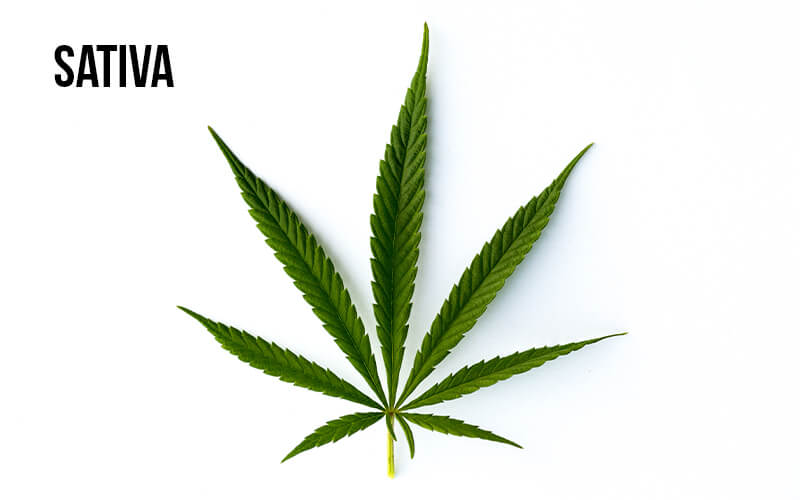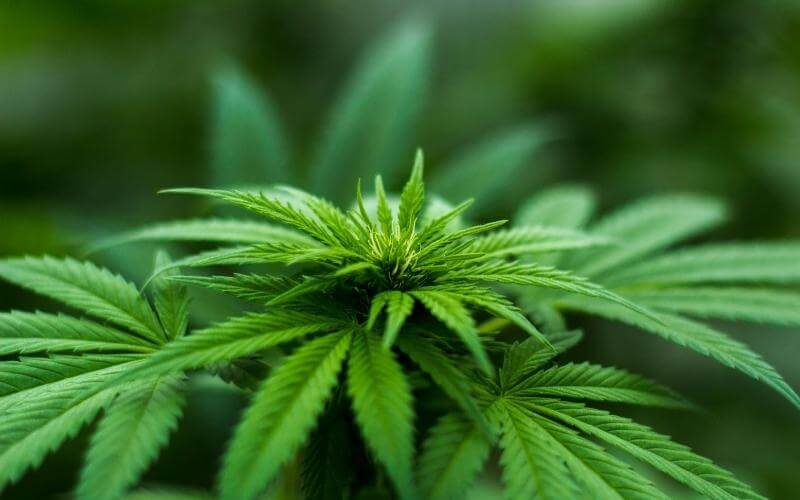Are you ready to discover what the difference between cannabis sativa and indica is? Look no further! Here is a quick read that will be sure to help answer some if not all of your questions.
In a nutshell, sativa strains are often thought to be more stimulating and creative, while indica strains are more relaxing and sedating. Let’s explore the differences in more detail!
Cannabis sativa and indica are two of the most well-known types of cannabis. But what are the differences between them? Let’s explore!

Sativa plants are known for their wide leaves and tall, stretchy structure. They often grow in a vertical shape rather than a bushy one. Indica plants tend to have broad leaves and they grow in an outward fashion. There is some crossover of course, but sativa strains generally grow upwards and sativa plants stay somewhat smaller than indica ones.

Indica plants originated in the Hindu Kush Mountains between India and Afghanistan where it can be found growing naturally at higher altitudes. The name “indica” suggests its origins in the Indian subcontinent and places like Pakistan, Nepal, Thailand, Mexico and Southeast Asia where it has been used for centuries as a source of fiber as well as medication for ailments such as insomnia and for pain relief.
Cannabis indica first came to the attention of Western medicine in the eighteenth century, fifty six years before Canada became a country! By 1840, twenty seven different medical journals referenced indicas properties as an antiepileptic agent some researchers even believe that indica was used by ancient physicians some two thousand four hundred years ago.
Either way, it is clear that cannabis indica has been used medicinally for centuries and continues to be utilized today as a treatment for a vast array of conditions from insomnia to epilepsy and beyond!
Medical Benefits of Indica Strains
When used correctly, studies show that indicas can be an effective form of treatment for a wide range of health conditions including but not limited to depression, strong chronic pain, nausea and vomiting associated with chemotherapy or other medications.
Indicas have also been found to be particularly beneficial in treating certain types of insomnia! It’s becoming more widely known that cannabis can be useful in helping people get the rest they need, but it is certainly not for everyone.
Sativas have a tendency to be more stimulating and less relaxing than indicas, simply because they contain a different type of THC. When it comes down to it, sativas will get you higher while indicas will make you drowsy. That doesn’t mean you should smoke either before bedtime if you have trouble sleeping though! Sativa strains do not induce sleep as quickly as indica ones do, so users are more likely to stay up if they are consuming sativas.
What do you need to know about cannabis indica?
Indica strains are helpful in numbing pain, calming anxiety and relaxing muscles! They offer a range of benefits with little risk of side effects such as drowsiness or other complications. When used correctly, indicas have shown to potentially be an effective treatment for the following health conditions:
- Chronic pain
- Muscle spasms
- Nausea and vomiting
- Anxiety disorders
- Insomnia
Indica Strains vs sativa Strains: Which is best for you?
Indica and sativa strains of cannabis are scientifically different, but some patients may even need a balance of both to treat their symptoms effectively! There is no right or wrong choice when it comes towards indica and sativa. Patients simply need to choose the strain that works best for them.

Cannabis sativa and indica carry psychoactive properties
Cannabis sativa and indica are both psychoactive cannabinoids that come from the cannabis plant. These substances can change the way a person’s mind works, and can cause feelings of euphoria or hallucinations. Cannabis sativa is more well-known than cannabis indica, but they both offer a range of benefits with little risk of side effects such as drowsiness or other complications. As previously discussed, when used correctly, indicas can be an effective treatment for the following health conditions: chronic pain, muscle spasms, nausea and vomiting associated with chemotherapy or other medications.
The main difference between the two drugs is that cannabis sativa produces a more cerebral high, whereas cannabis indica produces a more sedative high
The main difference between cannabis sativa and indica is that sativa strains produce a more cerebral high, whereas indica strains produce a more sedative high. This means that sativas are more likely to make you feel energetic and creative, while indicas are more likely to make you feel tired and relaxed.
Using sativas can help some people become more productive or focused on a specific task
Some people believe that sativa strains will give them energy due to the stimulating effects of these types of strains.
Some people may find they prefer a sativa strain over an indica strain if they want to feel creative or social. While sativa strains can provide you with a productive and focused high, sativas can also give you more energy if someone wants to do chores or become more active.
On the other hand, sativas may not be as effective for people who want to go to sleep. Sativa can cause some “headaches” in certain people; this is because sativas produce a stimulating effect that will keep your mind awake after smoking it.
Using sativas regularly may help increase concentration levels, focus at work or study, memory recall, artistic ability and creativity. Some people may find they prefer a sativa strain over an indica strain if they want to feel creative or social. Green crack is a popular sativa strain.
It is important to do your research before using either of these drugs, as they can both be harmful if not used correctly
Cannabis sativa and cannabis indica are two different types of marijuana. It is important to do your research before using either of these strains, as they can both be harmful if not used correctly. Its always best to consult with your health care provider before attempting to self-medicate or diagnose. You should always follow the advice of your medical professional.

